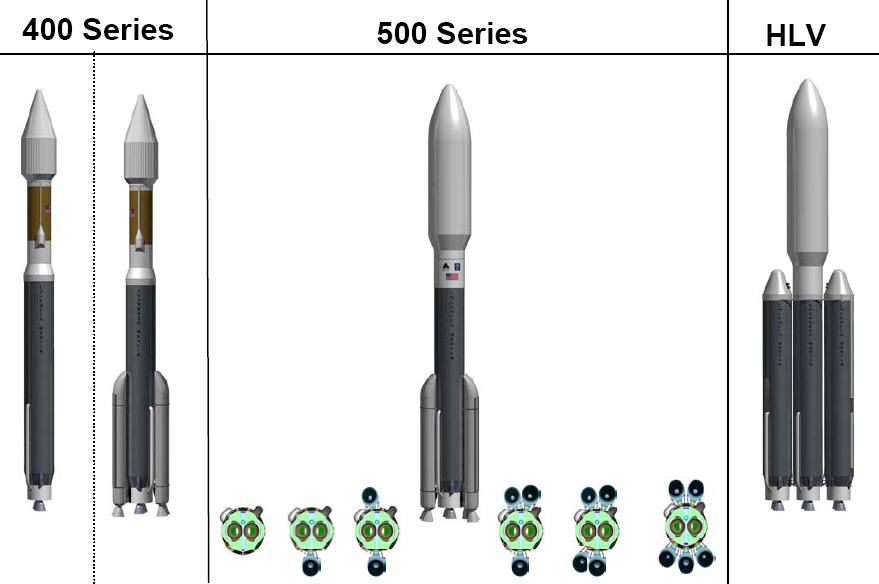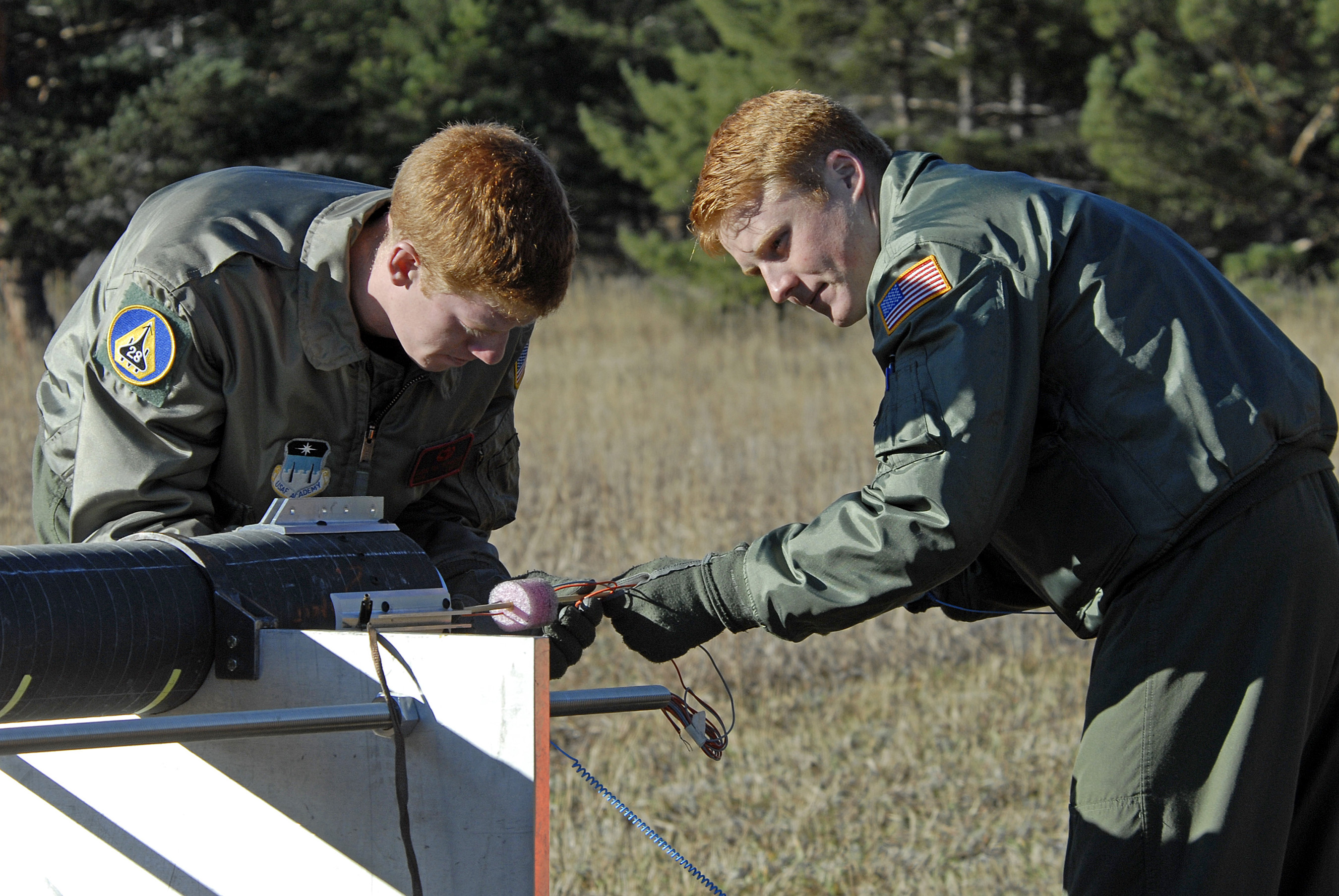|
FalconSAT
FalconSAT is the United States Air Force Academy's (USAFA) small satellite engineering program. Satellites are designed, built, tested, and operated by Academy cadets. The project is administered by the USAFA Space Systems Research Center under the direction of the Department of Astronautics. Most of the cadets who work on the project are pursuing a bachelor of science degree in astronautical engineering, although students from other disciplines (typically electrical engineering, mechanical engineering, or computer science) join the project. Compared to most commercial satellite projects, FalconSAT is considerably lower budget, and follows a very accelerated development cycle. Because of the near total personnel turnover every year (the program is generally a senior cadet project, and graduating cadets must be replaced yearly) it forces the cadet engineers to very quickly learn and become familiar with the satellite systems to which they are assigned. FalconSAT used to ha ... [...More Info...] [...Related Items...] OR: [Wikipedia] [Google] [Baidu] |
Falcon 1
Falcon 1 was a small-lift launch vehicle that was operated from 2006 to 2009 by SpaceX, an American aerospace manufacturer. On 28 September 2008, Falcon 1 became the first privately-developed fully liquid-fueled launch vehicle to go into orbit around the Earth. The two-stage-to-orbit rocket used LOX/RP-1 for both stages, the first powered by a single Merlin engine and the second powered by a single Kestrel engine. It was designed by SpaceX from the ground up. The vehicle was launched a total of five times. After three failed launch attempts, Falcon 1 achieved orbit on its fourth attempt in September 2008 with a mass simulator as a payload. On 14 July 2009, Falcon 1 made its second and final flight, successfully delivering the Malaysian RazakSAT satellite to orbit on SpaceX's first commercial launch (fifth launch overall). Following this flight, the Falcon 1 was retired and succeeded by Falcon 9. SpaceX had announced an enhanced variant, the Falcon 1e, but development wa ... [...More Info...] [...Related Items...] OR: [Wikipedia] [Google] [Baidu] |
Atlas V
Atlas V is an expendable launch system and the fifth major version in the Atlas launch vehicle family. It was originally designed by Lockheed Martin, now being operated by United Launch Alliance (ULA), a joint venture between Lockheed Martin and Boeing. Atlas V is also a major NASA launch vehicle. It is America's longest-serving active rocket. In August 2021, ULA announced that Atlas V would be retired, and all 29 remaining launches had been sold. , 19 launches remain. Each Atlas V launch vehicle consists of two main stages. The first stage is powered by a Russian RD-180 engine manufactured by Energomash and burning kerosene and liquid oxygen. The Centaur upper stage is powered by one or two American RL10 engine(s) manufactured by Aerojet Rocketdyne and burns liquid hydrogen and liquid oxygen. The Star 48 upper stage was used on the ''New Horizons'' mission as a third stage. Strap-on solid rocket boosters (SRBs) are used in most configurations. AJ-60A SRBs were us ... [...More Info...] [...Related Items...] OR: [Wikipedia] [Google] [Baidu] |
FalconLaunch
FalconLaunch is the name of a former small sounding rocket development program at the United States Air Force Academy. The program falls beneath the purview of the Academy Department of Astronautics. The program has two basic purposes: first, to educate cadets in the practice of space systems engineering; and two, to produce a sounding rocket each year. The original technological goal of the program was to develop a light (~100 lb) sounding rocket capable of delivering a small (~5 lb) payload to the edge of space (~100 km). Senior-level cadets handle most aspects of the program. This program is similar in concept to another USAFA Astronautics program, FalconSAT. History 2002-2003: FalconLaunch-1 2003-2004: FalconLaunch-2 2004-2005: FalconLaunch-3 2005-2006: FalconLaunch-4 2006-2007: FalconLaunch-5 2007-2008: FalconLaunch-6 - Exploded during test firing on 4 November 2009. 2008-2009: FalconLaunch-7 - Test launched from the White Sands Missile Range White ... [...More Info...] [...Related Items...] OR: [Wikipedia] [Google] [Baidu] |
AMSAT
AMSAT is a name for amateur radio satellite organizations worldwide, but in particular the Radio Amateur Satellite Corporation (AMSAT) with headquarters at Washington, D.C. AMSAT organizations design, build, arrange launches for, and then operate (command) satellites carrying amateur radio payloads, including the OSCAR series of satellites. Other informally affiliated national organizations exist, such as AMSAT Germany (AMSAT-DL) and AMSAT Japan (JAMSAT). History AMSAT was founded in 1969 in Washington, D.C. to continue the efforts begun by Project OSCAR. Its first project was to coordinate the launch of OSCAR 5, constructed by students at the University of Melbourne. Some design modifications were needed and were made by AMSAT members, and the satellite was successfully launched on 30 January 1970, on a NASA Thor Delta launch vehicle. AMSAT's next launch was AMSAT-OSCAR 6 (AO-6) on 15 October 1972. AO-6 was AMSAT's first long-life satellite, and was built with parti ... [...More Info...] [...Related Items...] OR: [Wikipedia] [Google] [Baidu] |
Cape Canaveral Air Force Station Space Launch Complex 41
Space Launch Complex 41 (SLC-41), previously Launch Complex 41 (LC-41), is an active launch site at Cape Canaveral Space Force Station. As of 2020, the site is used by United Launch Alliance (ULA) for Atlas V launches. Previously, it had been used by the USAF for Titan III and Titan IV launches. Atlas V After the last Titan launch, the complex was renovated to support the Atlas V. SLC-41 was the site of the first-ever Atlas V launch on 21 August 2002, lifting Hot Bird 6, a Eutelsat geostationary communications spacecraft built around a Spacebus 3000B3 bus. Atlas V rockets are assembled vertically on a mobile launcher platform in the Vertical Integration Facility, located to the south of the pad. The MLP is transported to the launch pad on rails about a day before launch. Modifications for supporting human spaceflight In September 2015, pad modifications began to support human spaceflight with the Boeing CST-100 Starliner. Modifications include the addition of a launch servic ... [...More Info...] [...Related Items...] OR: [Wikipedia] [Google] [Baidu] |
Cape Canaveral Air Force Station
Cape Canaveral Space Force Station (CCSFS) is an installation of the United States Space Force's Space Launch Delta 45, located on Cape Canaveral in Brevard County, Florida. Headquartered at the nearby Patrick Space Force Base, the station is the primary launch site for the Space Force's Eastern RangeCAST 1999, p. 1-12. with three launch pads currently active (Space Launch Complexes 37B, 40, and 41). The facility is south-southeast of NASA's Kennedy Space Center on adjacent Merritt Island, with the two linked by bridges and causeways. The Cape Canaveral Space Force Station Skid Strip provides a runway close to the launch complexes for military airlift aircraft delivering heavy and outsized payloads to the Cape. A number of American space exploration pioneers were launched from CCSFS, including the first U.S. Earth satellite (1958), first U.S. astronaut (1961), first U.S. astronaut in orbit (1962), first two-man U.S. spacecraft (1965), first U.S. unmanned lunar ... [...More Info...] [...Related Items...] OR: [Wikipedia] [Google] [Baidu] |
STS-116
STS-116 was a Space Shuttle mission to the International Space Station (ISS) flown by Space Shuttle '' Discovery''. ''Discovery'' lifted off on 9 December 2006 at 20:47:35 EST. A previous launch attempt on 7 December had been canceled due to cloud cover. It was the first night launch of a Space Shuttle since STS-113 in November 2002. The mission is also referred to as ISS-12A.1 by the ISS program. The main goals of the mission were delivery and attachment of the International Space Station's P5 truss segment, a major rewiring of the station's power system, and exchange of ISS Expedition 14 personnel. The shuttle landed at 17:32 EST on 22 December 2006 at Kennedy Space Center 98 minutes off schedule due to unfavorable weather conditions. This mission was particularly notable to Sweden, being the first spaceflight of a Scandinavian astronaut (Christer Fuglesang). STS-116 was the final scheduled Space Shuttle launch from Pad 39B as NASA reconfigured it for Ares I launches. The o ... [...More Info...] [...Related Items...] OR: [Wikipedia] [Google] [Baidu] |
MidSTAR I (USNA)
MidSTAR-1 is an artificial satellite produced by the United States Naval Academy Small Satellite Program. It was sponsored by the United States Department of Defense (DoD) Space Test Program (STP), and was launched on March 9, 2007 at 03:10 UTC, aboard an Atlas V expendable launch vehicle from Cape Canaveral Air Force Station. MidSTAR-1 flew along with FalconSat 3, STPSat 1, and CFESat as secondary payloads; the primary payload was Orbital Express. MidSTAR-1 Mission (USNA-5) MidSTAR is a general-purpose satellite bus capable of supporting a variety of space missions by easily accommodating a wide range of space experiments and instruments. The integration of the experiments with the satellite bus must be accomplished with minimal changes to the satellite bus design. MidSTAR is intended to be a relatively low-cost, quick response platform accommodating small payloads approved by the DoD Space Experiments Review Board (SERB) and awaiting launch through STP. MidSTAR is de ... [...More Info...] [...Related Items...] OR: [Wikipedia] [Google] [Baidu] |
Ionospheric
The ionosphere () is the ionized part of the upper atmosphere of Earth, from about to above sea level, a region that includes the thermosphere and parts of the mesosphere and exosphere. The ionosphere is ionized by solar radiation. It plays an important role in atmospheric electricity and forms the inner edge of the magnetosphere. It has practical importance because, among other functions, it influences radio propagation to distant places on Earth. History of discovery As early as 1839, the German mathematician and physicist Carl Friedrich Gauss postulated that an electrically conducting region of the atmosphere could account for observed variations of Earth's magnetic field. Sixty years later, Guglielmo Marconi received the first trans-Atlantic radio signal on December 12, 1901, in St. John's, Newfoundland (now in Canada) using a kite-supported antenna for reception. The transmitting station in Poldhu, Cornwall, used a spark-gap transmitter to produce a signal with a frequenc ... [...More Info...] [...Related Items...] OR: [Wikipedia] [Google] [Baidu] |
Vandenberg Air Force Base
Vandenberg may refer to: * Vandenberg (surname), including a list of people with the name * USNS ''General Hoyt S. Vandenberg'' (T-AGM-10), transport ship in the United States Navy, sank as an artificial reef in Key West, Florida * Vandenberg Space Force Base, a United States military installation with a spaceport * Vandenberg (band), a Dutch hard rock band ** ''Vandenberg'' (album), their 1982 debut album * Vandenberg resolution, a United States Congress resolution passed in 1948 {{disambig ... [...More Info...] [...Related Items...] OR: [Wikipedia] [Google] [Baidu] |


.jpg)

